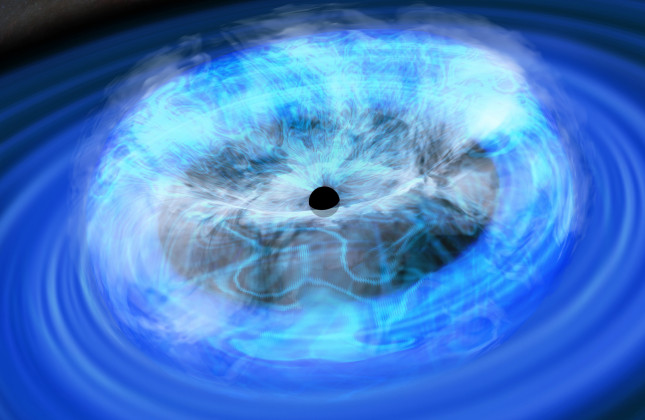In 2015, Matus Rybak (Leiden University) and his colleagues were searching for cold gas in the galaxy RXJ1131-1231. This galaxy – a quasar with a supermassive black hole at its centre – in the constellation Crater is a favourite of astronomers because there is another galaxy between it and Earth that acts as a lens. This makes the galaxy appear three times larger than it actually is, a phenomenon known as macrolensing.
Rybak and colleagues studied the galaxy using the ALMA telescope, which detects (sub)millimetre radiation from a plateau in northern Chile. They saw that the three images of the galaxy changed in brightness independently of each other. “That's a smoking gun for microlensing, a phenomenon that occurs when a star is located between the foreground galaxy and the observer,” says Rybak. "We immediately knew we had to pursue this further."
The combination of microlensing and macrolensing reveals things that remain invisible even with the best telescopes in the world and with macrolensing alone. “With this “double zoom” (the magnification by the galaxy and that by the star), it's as if you're placing two magnifying glasses on top of each other,” says Rybak. In 2020, the team therefore looked at the galaxy again and was able to track the brightness differences of the quasar.
The astronomers observed that the quasar flickered on timescales of years. The fact that the quasar flickers in millimetre radiation is remarkable, because this radiation is mainly produced by calm dust and quiet gas. The researchers think that the radiation comes from the corona, a hot, magnetic and active doughnut-shaped band around the supermassive black hole. Millimetre radiation had been observed near a black hole before, but it remained unclear whether it was caused by dust or other mechanisms.
Rybak collaborated with Dominique Sluse (Leuven) and Frédéric Courbin (Barcelona), among others. In 2008, they were pioneers in the field of microlensing in visible light. Now, 17 years later, they have succeeded in doing this with millimetre radiation for the first time.
The researchers have now been allocated observation time to study the quasar with the Chandra X-ray Telescope. Ultimately, they want to use microlensing to study the temperature, and magnetic fields close to the black hole. This is important because the conditions near the black hole influence the entire surrounding galaxy.
